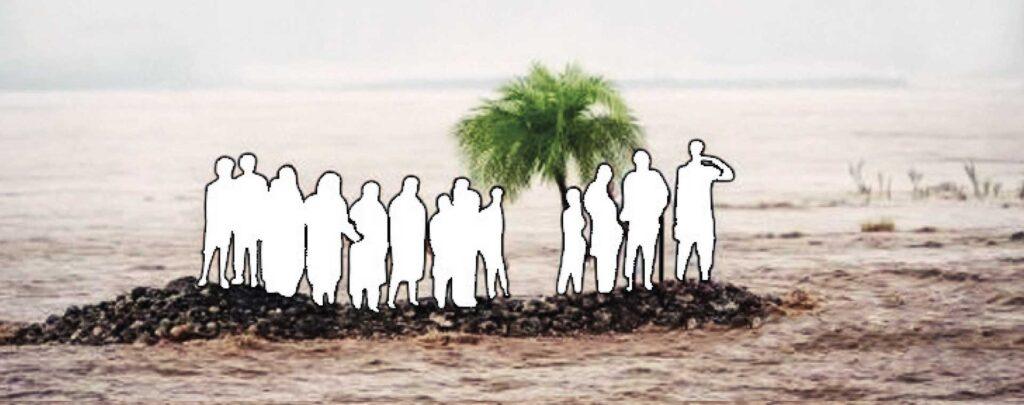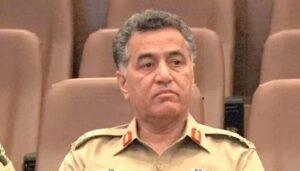Posted on July 6, 2025
CRUSH:
On June 28, the summer sun left the Swat valley to start a perfect day. A favorite retirement for tourists from tourists from all over the country that fled the damn heat of urban centers, Swat was in the maximum tourism season. The winding roads of the Valley were full of vehicles that transported families in search of fresh breezes, mountain views and memories.
Around 8 in the morning, two families arrived in the Mingora area in Babazoi among the many other travelers. One family came from Mardan and the other had come from Sialkot. After a light breakfast on a hotel on the road, they went to a picturesque place along the Swat River. With the water flowing gently nearby, the children laughed, the elders drank tea and everyone posed for photos, to capture moments of a memorable trip.
But the danger was being built silently in the top skies.
A sudden flood
What began as a light drizzle soon became a torrential downpour. Without realizing the weather or weather warnings of Cloudburst, families continued to enjoy their rest on the riverbank. As the water level began to increase, they moved to what looked like a higher terrain, possibly more out of panic than the strategy.
Ocular witnesses then noticed that the water level at the beginning was no more than a deep foot, still unfair enough to walk to safety. But then the flood came. In a matter of minutes, an increase in the flow transformed the slight current into a furious torrent. The improvised land was wrapped, and the families were swept.
Only three people survived. Fourteen were lost in a matter of minutes.

Could it have been avoided?
The tragedy caused pain and anger nationwide. Many questioned whether this was simply a natural disaster, or something that could have been avoided with a better forecast and response.
Hazrat Ali Bacha, a Swat -based senior journalist, said serious administrative failures. “Babozoi is not a designated tourist place. These families only stopped on the way to Kalam,” he said. “They were trapped for almost an hour. A trained and properly equipped rescue team could have saved them.”
Bacha also revealed a worrying infrastructure defect. “The district government had recently built a jogging track along the river. To do that, a contractor temporarily diverted the flow of water with a wall, which was never dismantled after the project ended. During the rain, that wall collapsed, redirecting all the strength of the river where the tourists stayed.”
He added that local rescue units, particularly the 1122 rescue, not only in acting but prepared inadequately, claiming that many of its members were recruited based on political affiliation, not merit.
The true lifeguards
When the official response hesitated, the local heroes intervened. Hilal, a well -known local fisherman and diver, had just returned from rescuing seven people in other places when someone informed him about the tragedy that develops in Babazai.
“When I arrived, the Asmat rescue diver was preparing his raft. We gathered it and managed to save three people,” Hilal recalled. “Later, I found two bodies. I am disconsolate, I did not get there before.”
Hilal is not voluntary by chance: rescue work extends to his family. His father served as lifeguards and local fishermen for 35 years. Today, Hilal and his brothers continue that legacy.
He also criticized the standard rescue team. “Rotor inflatable boats are useless in the Swat River, it is too shallow and rocky. We still use the traditional ‘jala’ (wooden raft), which works much better here.”
Hilal and Asmat were later invited to the governor’s house and publicly praised for their courage. However, behind the praise there is a worrying truth: those without uniforms are often those who do the most critical work.
 Rescue 1122 Respond
Rescue 1122 Respond
Facing the public scrutiny, Director General Rescue 1122 Shah Fahad defended the actions of his department.
“The Swat River on a normal day has a discharge of 3,000 to 4,000 CUSECs. That Friday, it increased to 77,000 Cusecs in just 45 minutes. This was an extreme sudden flood,” he explained.
Fahad recognized a key delay in the rescue response: the first emergency call received at 9:49 AM erroneously reported that tourists were caught in a hotel. “We sent an ambulance. When it turned out to be an emergency of water, only then we send to the appropriate team. That lack of communication cost us time.”
He refuted claims that the 1122 rescue was poorly equipped. “We have inflatable ships and racks ‘Jala’, life and trained divers,” he said. “We have also collected images and videos of CCTV of the locals to rebuild what happened.”
Government Action and Public Reaction
The tragedy triggered an immediate administrative response from the provincial government. The lawyer Muhammad Ali Saif, advisor to the prime minister on information, confirmed that disciplinary measures had been taken.
“The main minister suspended the commissioners attendees of Babazoi and Khwazakhela, the additional deputy commissioner (Socorro) and the rescue chief of the 1122 district,” Saif said. “The Prime Minister’s inspection team has launched a complete investigation.”
SAIF also detailed new government initiatives in response: a complete prohibition of rivers bed mining on Swat; An offensive in invasions, including hotels built too close to the river; Deployment of modern rescue tools such as drones and life vests; establishment of a unified response center on SWAT; Mobile patrol units along Riverbanks throughout the Division of Malakand; and a reevaluation of the early flood alert system of the irrigation department.
He added that more than 75 stranded people were rescued from different parts of the valley in the hours after flooding and that financial compensation was distributed to affected families.
“The prime minister personally visited families to offer condolences,” Saif said. “While we cannot prevent natural disasters, we are committed to ensuring that negligent officials are responsible.”

A system on the edge
Despite the guarantees, many places believe that these are reactive measures, very little, too late. Year after year, the Monzón season exhibits how stretched and with little resources are really emergency services in the province.
In many areas, 1122 rescue personnel are not trained for specific land such as the Rocky Swat River. The team is often inappropriate or outdated. In forest fire emergencies, the responders have even been seen trying to turn off flames using tree branches.
Nor is there a constant display of officers along the rivers during flood seasons. Mobilizing local volunteers such as Hilal could close this gap, but doing so requires long -term planning, which critics say they are still missing.
“This is not just a bad day. It is a system that has not been built to resist the realities of this region,” Bacha said.
Failed infrastructure
Floods also highlighted a long -term problem: the fragility of modern infrastructure. Through Swat and much of Khyber-Pakhtunkhwa, roads, bridges and sewers collapse routinely under the tension of heavy rains. In revealing, many of the bridges built during the British colonial domain more than a century remain standing, while the newest built only 10-15 years ago crumble.
This is not just a matter of bad luck: it reflects questionable construction practices, lack of supervision and quality committed in public works. The consequences are mortal.
Each destroyed bridge or road collapsed during an flood is not just a logistics inconvenience: it is a cut line of life, often at the worst possible time.
A tourist place or a death trap?
Swat Valley has attracted travelers for a long time with their impressive beauty, rich history and hospitality. But each disaster like this moves away from its reputation. When security is not guaranteed, tourists will think twice, and the local economy, which depends largely on tourism, will suffer.
However, in the midst of anguish, there is also hope. The tragedy has caused very long conversations about the rescue capacity, the climate resilience and integrity of the infrastructure. It remains to be seen if these conversations translate into a lasting reform.
A man -made crisis?
What happened in Babazoi on June 28 was not just an act of nature. It was the result of waterfall failures: ignored warnings, incomplete projects and systemic negligence.
Water came quickly. But the gaps in the system were building for years.
When Swat begins to heal, a truth remains: if the real reform does not follow this tragedy, then the next one is just a monzón away.
Riaz Ahmad is an independent and collaborator journalist
All facts and information are the exclusive responsibility of the author




